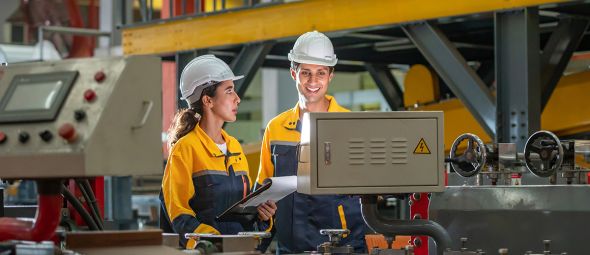Job Quality and Employer Practices: Evidence from B Corporations
A new WorkRise report explores how employer practices related to job quality differ between certified B Corporations and similar firms, revealing insights into worker benefits, firm outcomes, and strategies to improve job quality.
Read full report
A new WorkRise report explores how employer practices related to job quality differ between certified B Corporations and similar firms, revealing insights into worker benefits, firm outcomes, and strategies to improve job quality.
Grantmaking and Partnerships
Led by a cross-sector Leadership Board that is ideologically diverse and representative of often-siloed groups, WorkRise invests in research on policies, programs, and practices that have the potential to accelerate economic security and mobility for low-wage workers. We fund analyses and the creation of data that shed light on labor market barriers, trends, and opportunities. And we engage in strategic partnerships that help advance evidence-based solutions in support of our mission. Learn more about our most recent request for proposals and how you can collaborate with WorkRise.
The Latest
In Depth

Economic context, Care work, Scheduling
Feature
Last updated on October 24, 2024
Segregation in the Low-Wage Workforce
Over the past 50 years, the composition of the low-wage workforce has changed: more than half of low-wage workers are now people of color, up from just 20 percent in 1971. Today, Black, Latino, and women workers are more likely to be segregated into worse-quality and lower-paying jobs.
WorkRise Research
The Latest

Social determinants of work
March 05, 2024
Article
Move to Opportunity or Invest Locally: What helps workers get ahead?
Federal, state, and local investment in underresourced communities is more effective in improving low-wage workers’ economic mobility than moving them to well-funded communities.

Skills and training
February 27, 2024
Video
WorkRise Shorts: Perspectives on Learning and Employment Records, with Jhacole LeGrand-Dunn
How can a learning and employment record, a new kind of credentialing tool, promote greater equity in the US jobs market? Answering this question is Jhacole LeGrand-Dunn, Senior Director, Pathways, at Digital Promise, and a member of the Retail Opportunity Network, a community of leaders focused on upskilling and economic mobility. LeGrand-Dunn explains how learning and employment records can open up more pathways to access to jobs and enable more equitable access to jobs.
February 27, 2024

Worker voice, representation, and power
February 20, 2024
Research Summary
The Racial Wealth Gap Is Smaller among Union Members
New evidence sheds light on the wealth of union households, finding greater wealth, higher pay, more benefits, and more stable employment for union members of color compared to their nonunionized counterparts.

Employer practices
February 27, 2024
Article
How Companies Can Modernize Their Approach to CSR: Strategies for a Successful Company, Workforce, and Society
This piece offers strategies to navigate the evolving landscape of corporate social responsibility in light of societal demands for more human-centered interventions.
Research

Economic context
Brief
September 16, 2020
Five Lessons from Last Decade's Employment Recovery
The employment recovery from the Great Recession offers five key lessons for policymakers, employers, and other decisionmakers as they face the employment crisis created by Covid-19.
WorkRise Research

